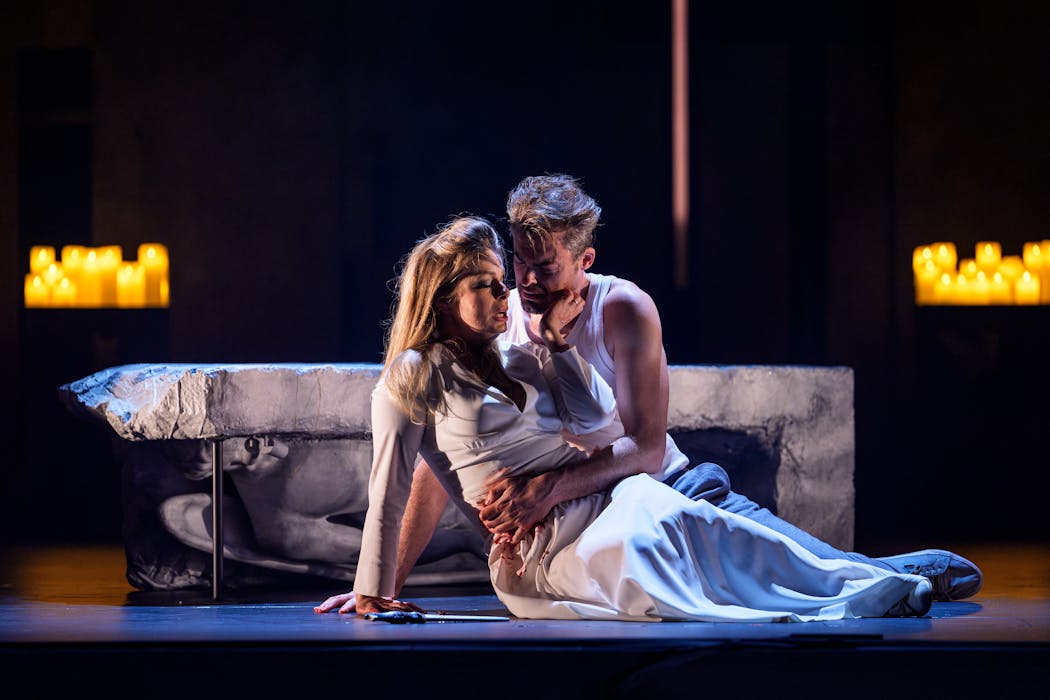
State Opera South Australia’s production of Charles Gounod’s Roméo et Juliette, co-produced with the West Australian Opera and the Irish National Opera, heralds a new globalised collaboration.
It is a considerable undertaking for the South Australian company, with the set built in Adelaide and the production requiring 200 personnel to bring it to fruition.
The focus is on young love: Roméo (Kyle Stegall) and Juliette (Siobhan Stagg) are moved by an extraordinary force that brings individuals together, in spite of their surroundings.
Shakespeare pitted such young love against the warring tribes of the Montagues and Capulets to highlight the folly of adult misdemeanours.
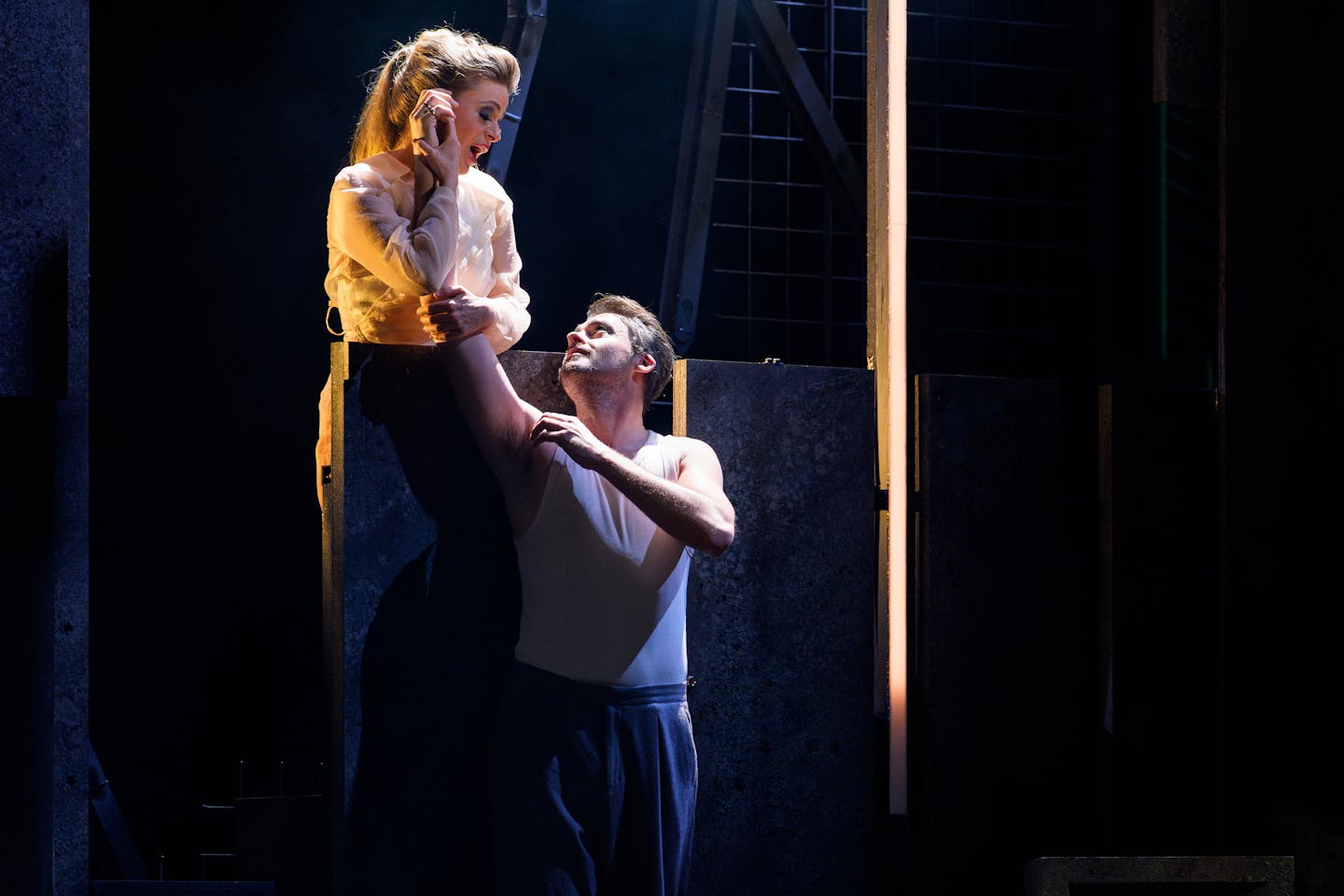
Gounod’s 1867 opera builds on this by foregrounding four duets between the two lovers. This structure provides a suspension of time, a spiritual quality in the intimacy that draws two souls together. These moments of beauty provide a powerful contrast with the violence of the world surrounding them.
From her training with École Jacques Lecoq, director Rodula Gaitanou is interested in the notion of “suspended space” and how a theatrical space is charged by human rhythm to become a living space. The rhythm here is in the music performed by the Adelaide Symphony Orchestra and accompanying movement and song of the two lead performers echoed by the supporting cast and the State Opera Chorus.
Soul’s fusion
The production begins literally with a bang, as a snap lighting cue reveals the Montagues and Capulets facing each other with guns drawn, dressed in 1940s trench coats and hats.
Two children encourage the families to lower their guns – only to have the weapons turned on them instead. It is an intelligent metaphor for both the purity of intentions of youth and a commentary on the death of innocence in war.
The children subsequently return, carried in a candlelit funeral procession that foregrounds what will come when Juliet discovers her would-be-lover is Romeo, from the despised Montagues.
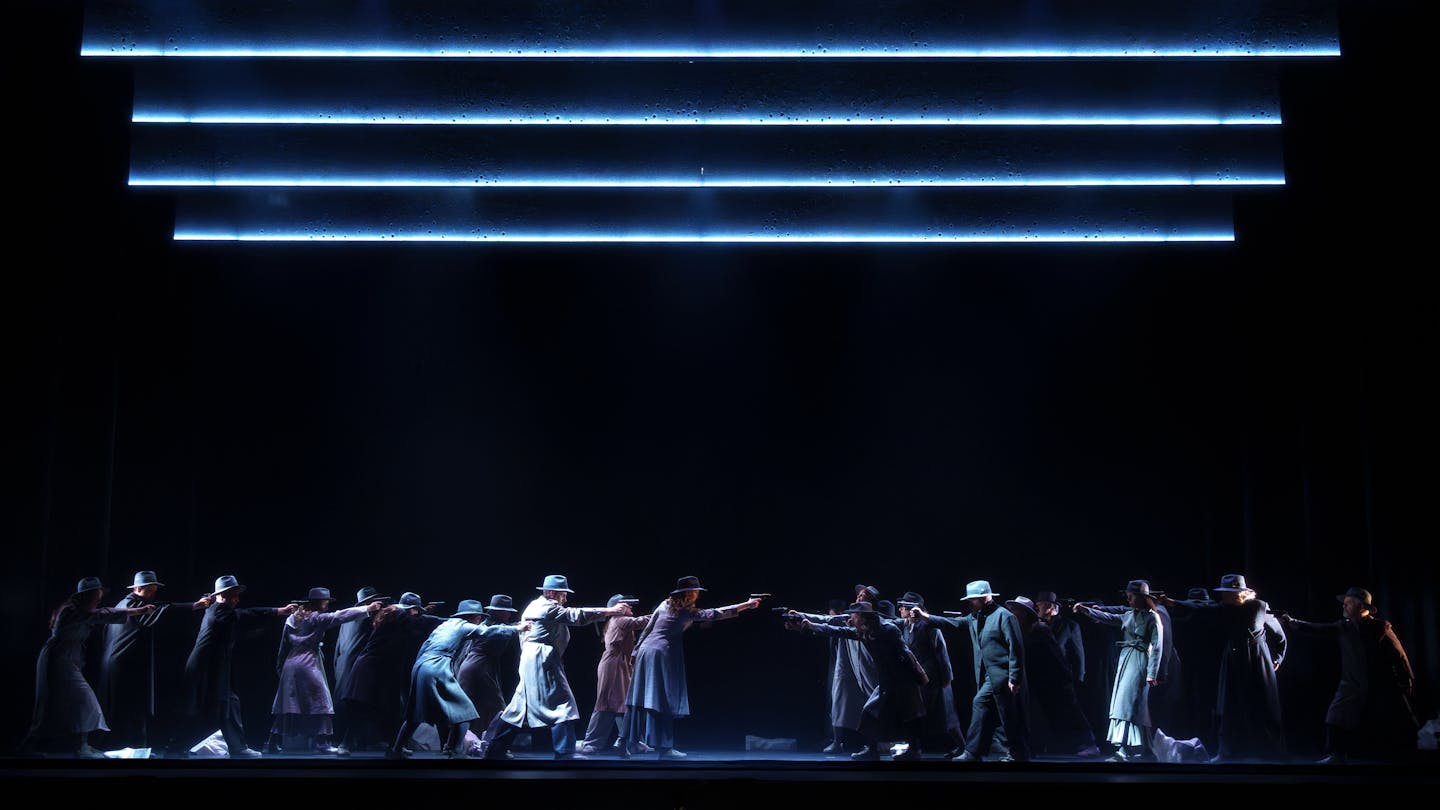
Stagg and Stegall’s triumphant singing brings the house down. Both provide solid physical and vocal anchors for the opera. Stagg’s voice soars and gives a powerful display that delivers the at times challenging notes with ease. She is finely paired with Stegall, whose defining moment is the soft and subtle tenderness he brings with great beauty to the balcony scene.
Sidelight, traditionally utilised in dance to isolate the body in space, is used stunningly by lighting designer Bernie Tan-Hayes. In a bold decision, warm orange – normally used to convey daytime – is employed to create the glow of pure love. This is contrasted with the coolness of night – love surrounded by the coldness of the world around.
This anti-naturalistic intention is furthered with the use of sparkling stars that first light up the balcony scene then glitter with the marriage of Roméo and Juliette – a literal rendering of happiness.
The lighting is finely embedded within the set by the designer Takis: a post-industrial/renaissance blend of towers of wire, castle and LEDs moved into varying configurations to create the different locations. The lowering and raising of the curtain before each act has the effect of highlighting each new setting.
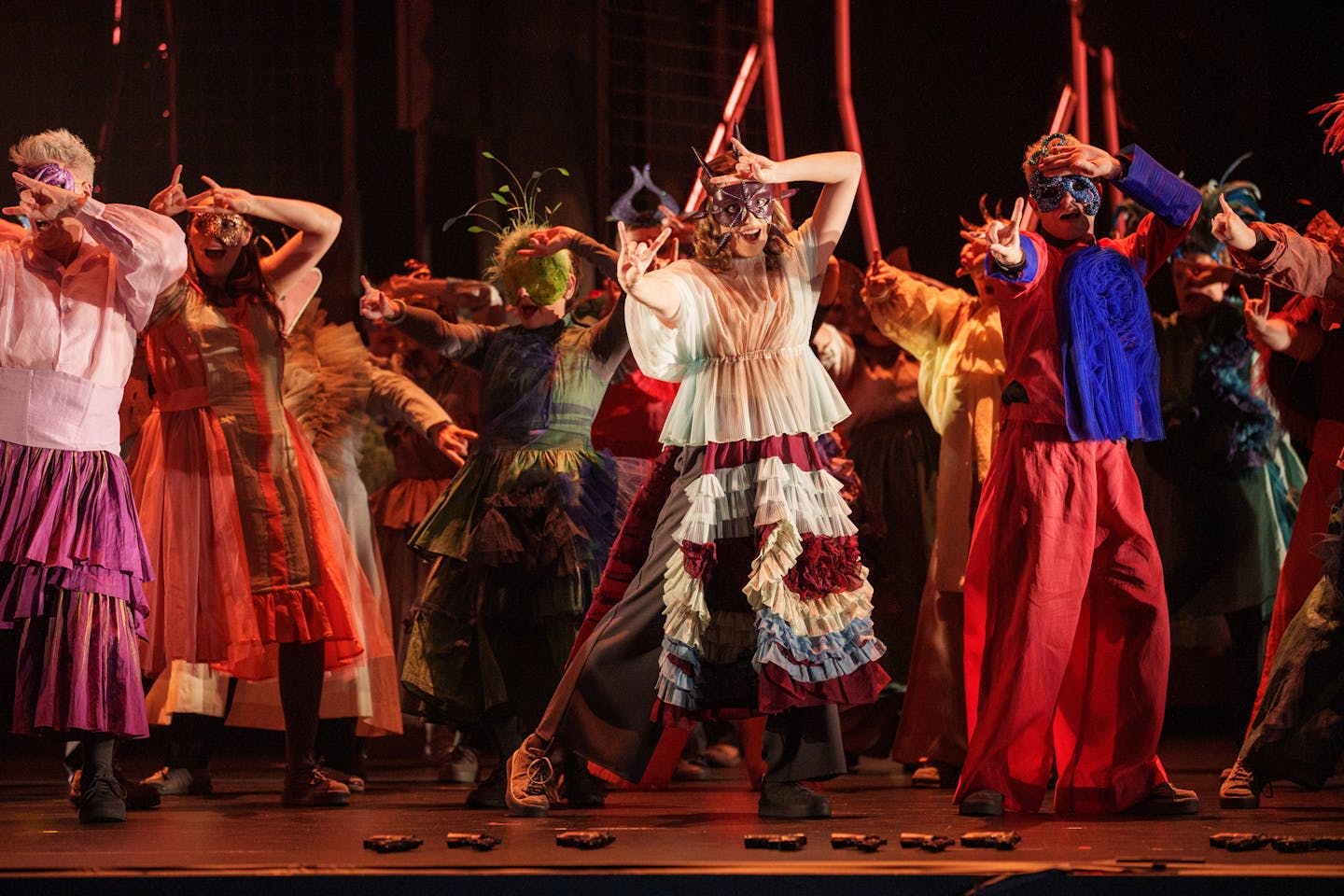
This culminates in the final act in the tomb where the blending of strips of LED lights, an off centre cross and candles is strikingly incandescent. Takis also creates a spectacular array of colourful costumes for the masked ball and a clever mirroring of the lover’s costuming when they marry, symbolising their soul’s fusion. The costumes range from the 1940s to the contemporary, giving a timeless feel.
Will there ever be peace?
The State Opera chorus is kept busy by the director working with movement coordinator Jo Stone, with much movement choreographed upstage to contrast with the action between the lovers developing downstage.
As Lecoq mentions, “there is no movement without a fixed point”. A prominent fixed point is the tableau after the deaths of Mercutio (an honourable Morgan Pearse) and Tybalt (Tomas Dalton with an energetic rashness). The chorus is aligned in stillness at the rear, Roméo is down stage centre flanked by the corpses either side.
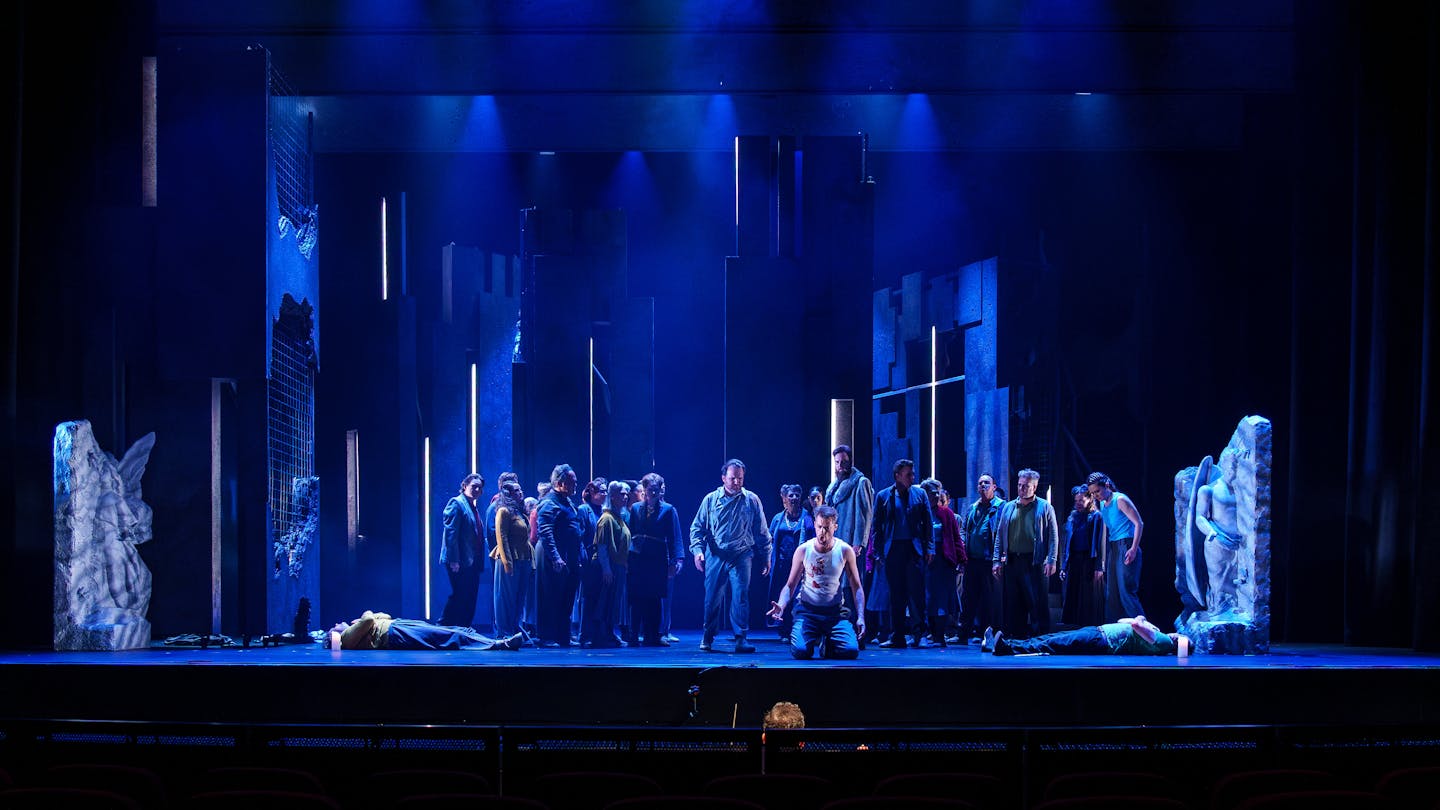
Gaitanou uses with great effect the raising of the individual guns of the Montagues and Capulets, then placed beside the dead bodies. Moments later the dignified Duc (Nicholas Lester) arrives and asks if there will ever be peace among them – a powerful message for the current conflicts in the world.
The remaining key singers provide strong support. There is the playful tease of Stéphano (Charlotte Kelso); the outraged and driven Capulet (Eugene Raggio); the earnest Frére Laurent (Pelham Andrews); the quietly assisting Gertrude (Catriona Barr); the supportive Grégorio (Jeremy Tatchell) and Benvolio (Zachary McCulloch); and a commendable performance by Oliver Dinnessen, making his debut with the company as Pâris.
The highlight of the production is the singing by the two lead performers. Their shared understanding is communicated both vocally and physically, achieving a complete immersion into the opera’s score and story.
Roméo et Juliette is at State Opera South Australia until November 1, then at the West Australian Opera in October 2026.
This article is republished from The Conversation, a nonprofit, independent news organization bringing you facts and trustworthy analysis to help you make sense of our complex world. It was written by: Russell Fewster, University of South Australia
Read more:
- Meow Meow’s The Red Shoes takes us beyond the showgirl’s feathers and frills
- The Shiralee brings a Shakespearean energy to the Aussie swag-man’s life
- Bruce Beresford’s The Travellers blends opera and the outback in a heartfelt story about homecoming
Russell Fewster does not work for, consult, own shares in or receive funding from any company or organisation that would benefit from this article, and has disclosed no relevant affiliations beyond their academic appointment.


 The Conversation
The Conversation
 The Daily Beast
The Daily Beast